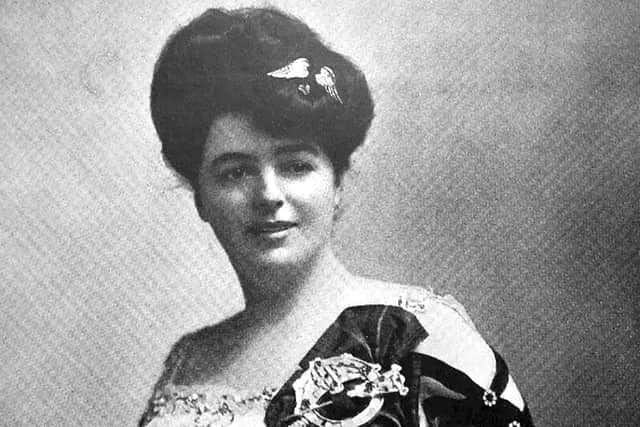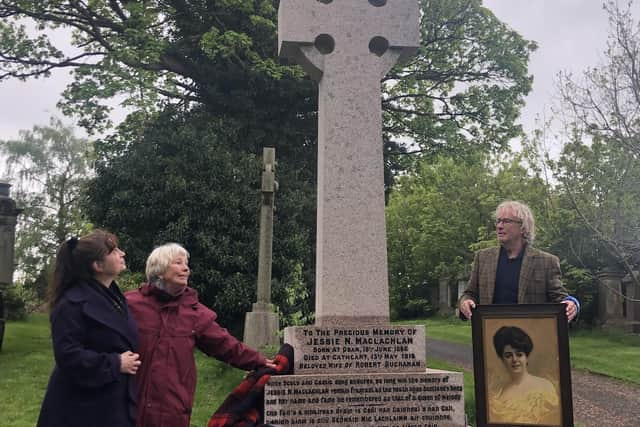Fans restore Victorian Gaelic singing sensation’s gravestone
The small group walked under dank skies to honour the Victorian opera singer on the 106th anniversary of her death, and to celebrate the restoration of the once-toppled cross of Balmoral red granite that marks her grave.
The ceremony was the culmination of two years’ work by singer and broadcaster Mary Ann Kennedy, and academics Dr Priscilla Scott and Professor Wilson McLeod, who raised thousands of pounds to repair the stone, and are now focused on raising MacLachlan’s profile.
Advertisement
Hide AdAdvertisement
Hide AdAs they arrived at the grave, a portrait of MacLachlan and her tartan shawl were laid at the pedestal which is inscribed with words about her enduring memory. Her death, at the age of 49, was reported in newspapers worldwide; yet, Kennedy explained, within five years she had been largely forgotten.


In her heyday, MacLachlan was a singing sensation, touring the world, trailing crowds in her wake. She also made the first commercial gramophone recording of a Gaelic song performing Mo Dhachaidh (My Home) and Oro Mo Nighean Donn Bhòidheach (Ho-ro My Nut-Brown Maiden) in 1899.
That original recording of Mo Dhachaidh still exists and so MacLachlan’s soprano voice drifted through the trees and time. Soon after, Kennedy performed the same song - two Gaelic songstresses reaching out across a century’s divide.
MacColl, the grandson of John MacColl, one of two pipers at Jessie’s funeral, played MacCrimmon’s Lament, which had rung out as she was laid to rest, then the Rev Donald Michael MacInnes of Gairbraid Parish Church, Glasgow, read a passage about Lois and Eunice, two forgotten Biblical women - a reminder that Jessie had thrived in a male-dominated world.
Among those listening was MacLachlan’s descendant Morag Forbes, who had brought the portrait and the shawl - presented to the singer in Canada - from her home in Nairn. MacLachlan was her grandfather’s aunt. “It is so emotional to be here. Every time I look at her portrait hanging in the dining room now, I will remember this moment,” she said.


Restoring the cross and pedestal was a major operation hindered by Covid and by the sheer weight of the stones - eight tonnes in total.
Jacqui Fernie, chair of Friends of Cathcart Cemetery, said: “We are delighted Jessie’s is the first stone to be restored, the first of many we hope. This is a garden cemetery. It was designed to be an open urban green space and we are so grateful to have this nature around us. Hopefully, we can help keep Jessie’s flame and legacy alive.”
A film about MacLachlan’s life and the campaign to restore her grave has been made by MacTV and will be shown later in the year.
Comments
Want to join the conversation? Please or to comment on this article.